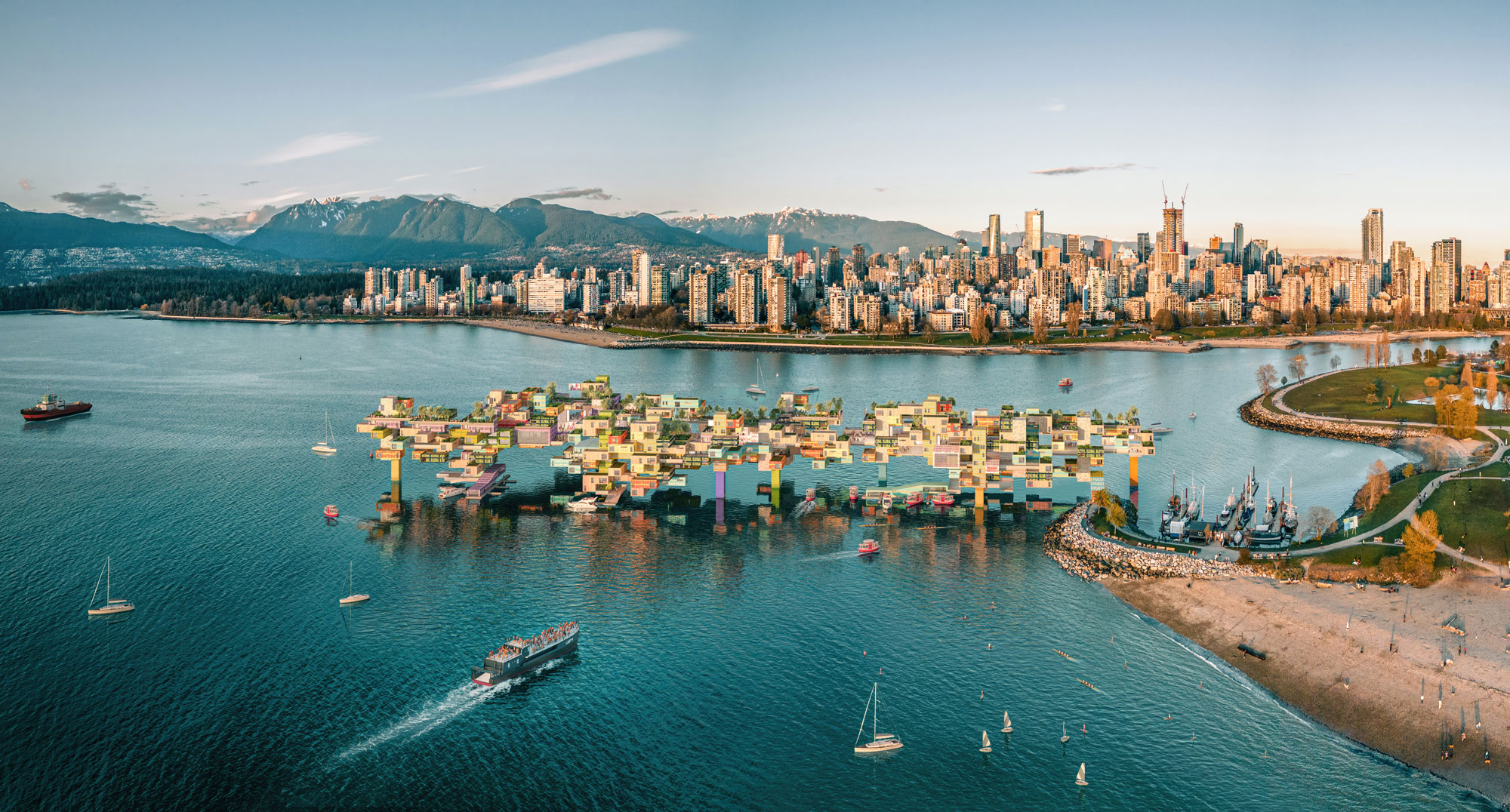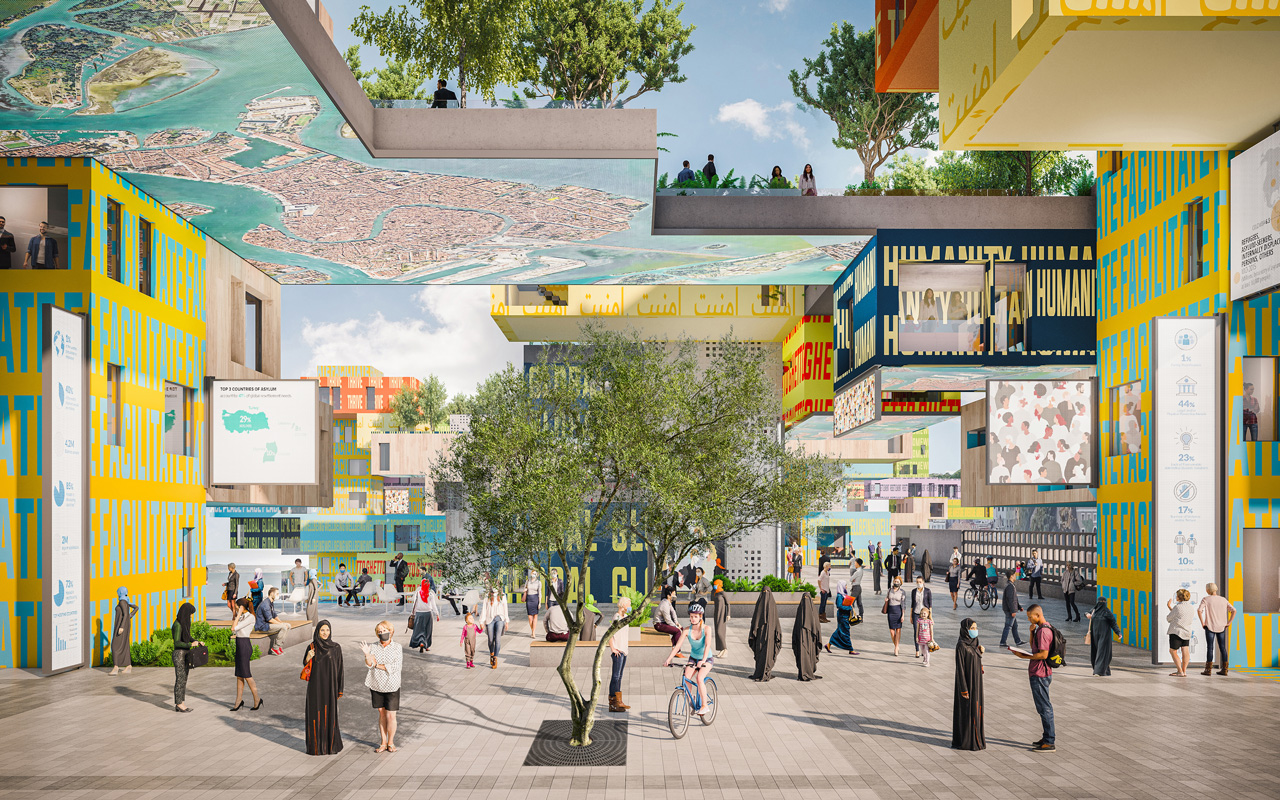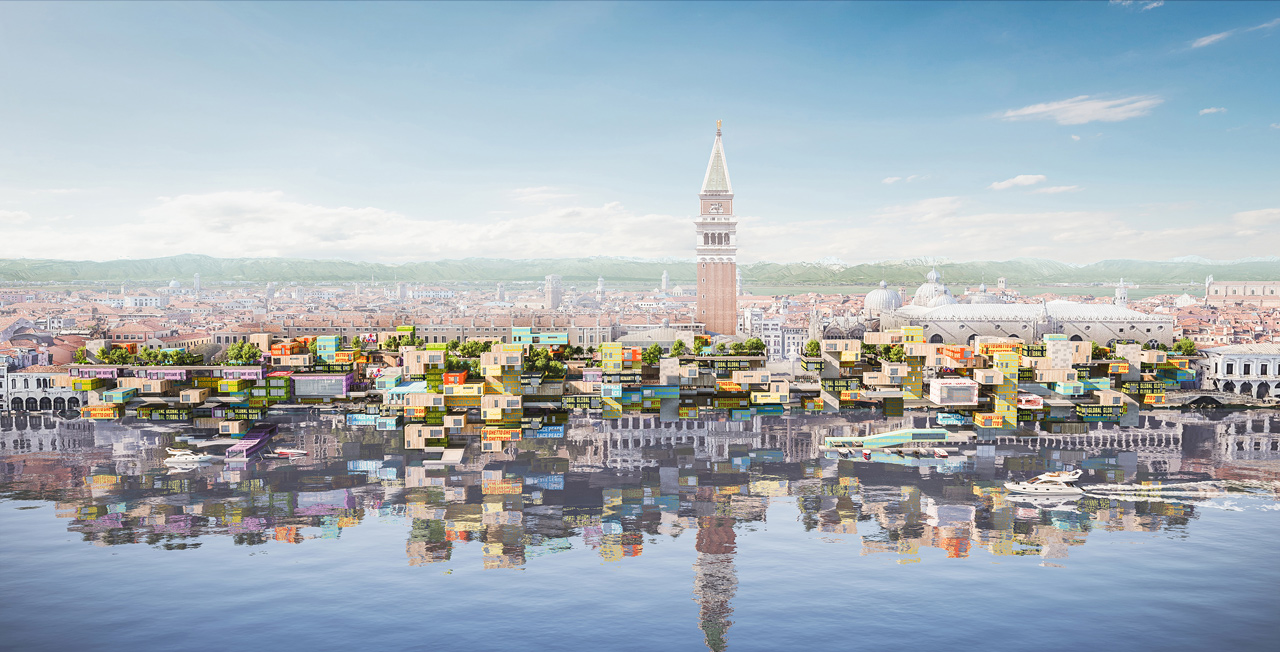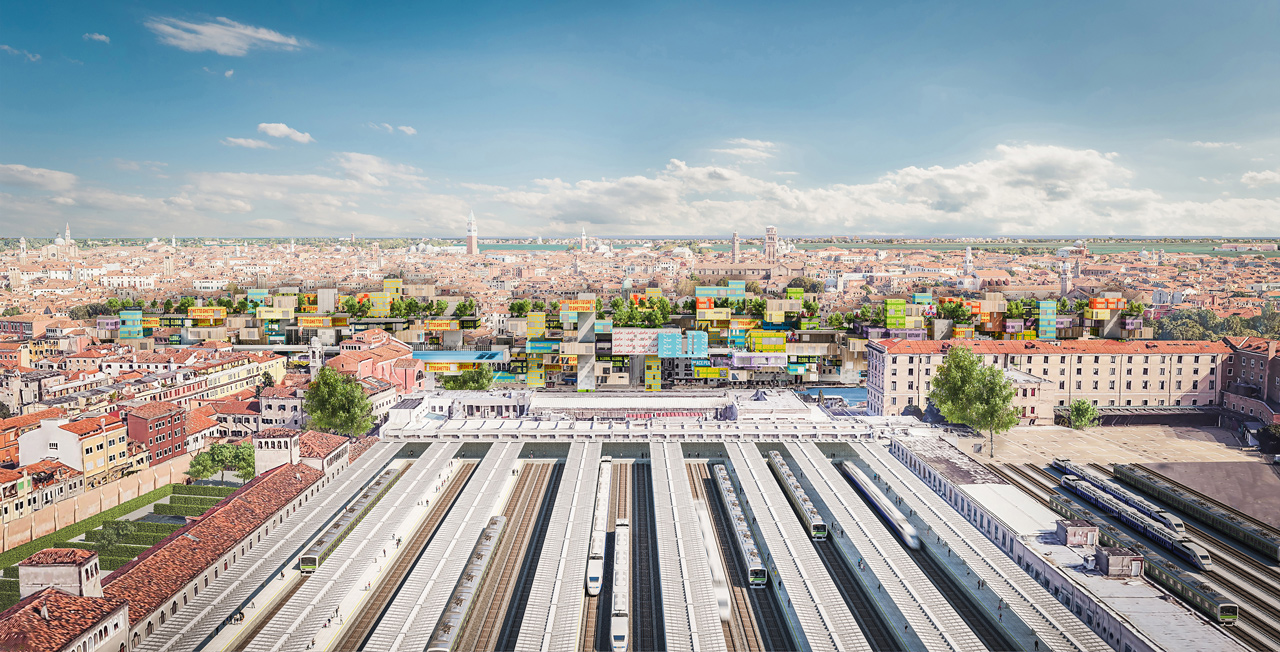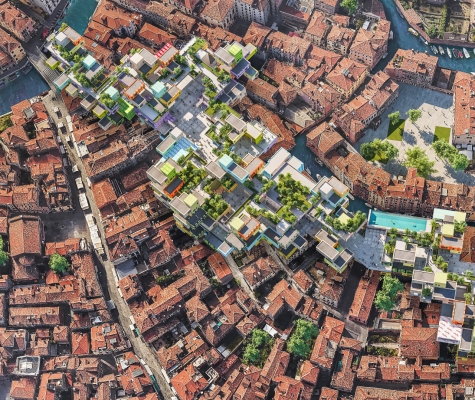How can we live together?
GHETTO originally exhibited at the European Cultural Centre’s 2021 Venice Architecture Biennale, themed “How will we live together?”. The exhibition considered the role of the architect in creating spaces for inclusion, and questioned the architect’s role as a “cordial convener and a custodian of the spatial contract.” The exhibition travelled to the AGO in Toronto in 2022, and continued the conversation at the MOV in 2023 in Vancouver – a city similarly challenged to Venice with issues of housing unaffordability, economic dependence on tourism, an influx of immigrants, and the displacement of others.
In the effort to explore our shared responsibility to care for one another and to find mutually beneficial financial mechanisms that redistribute equity to provide social benefits, GHETTO began as a theoretical series of four Venetian architectural sites that demonstrate these intentions through their economic model. In Vancouver’s exhibit, we have included a local iteration with the addition of a fifth site off the shores of the Museum of Vancouver.
Each of the sites are positioned near one of five compelling locations. In Venice: the Venetian Ghetto, Stazione di Santa Lucia, Piazza San Marco, and the Arsenale. And in Vancouver: off the shores of the Squamish Sen̓áḵw lands at the head of False Creek. These sites were carefully selected to parallel five key-influencing factors. In Venice: the Jewish Ghetto as project inspiration, the refugee crisis, Venetian over-tourism, and challenging the traditional role of the architect. In Vancouver: the project’s site acknowledges the historical displacement of Indigenous peoples who occupied the lands before us.
GHETTO is to be seen as a “theoretical rezoning” that imagines a housing timeshare project as the vehicle for the redistribution of wealth from tourists to refugees. While this project explores one iteration of the redistribution of equity possible in the development process, the community amenity contribution concept can be applied across a variety of geographies, scales and contexts to provide a myriad of social benefits.
Program
- Residential
Location
Vancouver, Canada & Venice, Italy
Awards
- Architizer A+ Awards, Special Mention – Unbuilt, Multi-Unit Housing (S <10 Floors), 2024
- World Architecture News Awards, Future Projects – Residential, Silver, 2023
- Grands Prix du Design Awards, Gold Certification: Concept & Unbuilt, 2022
- European Cultural Centre, ECC Architecture Award, Special Mention, 2021
- Architecture MasterPrize, Honourable Mention, Conceptual Architecture, 2021
- Architizer A+ Awards, Special Mention – Concepts, Architecture +Models & Rendering, 2021
- Azure Awards, People's Choice, 2021
This theoretical architectural project proposes the provision of housing for refugees funded through a condominium timeshare model. The intention is to illustrate the power of the role of the architect in the creation of inclusive cities. The specific goal is to share a framework which leverages the power of the development community to provide social benefit to others who have less.
Ghetto Manifesto
Contemporary architecture is often revered purely as an aesthetic rather than as a social force. The architect, as a navigator, has a leadership role in pursuing the meaningful intersection of justice and beauty, of ethics and aesthetics. In the creation of communities that encourage values of inclusivity, diversity and social benefit, the architect’s role has the potential to facilitate a transfer of equity to those most in need.
Gregory Henriquez
